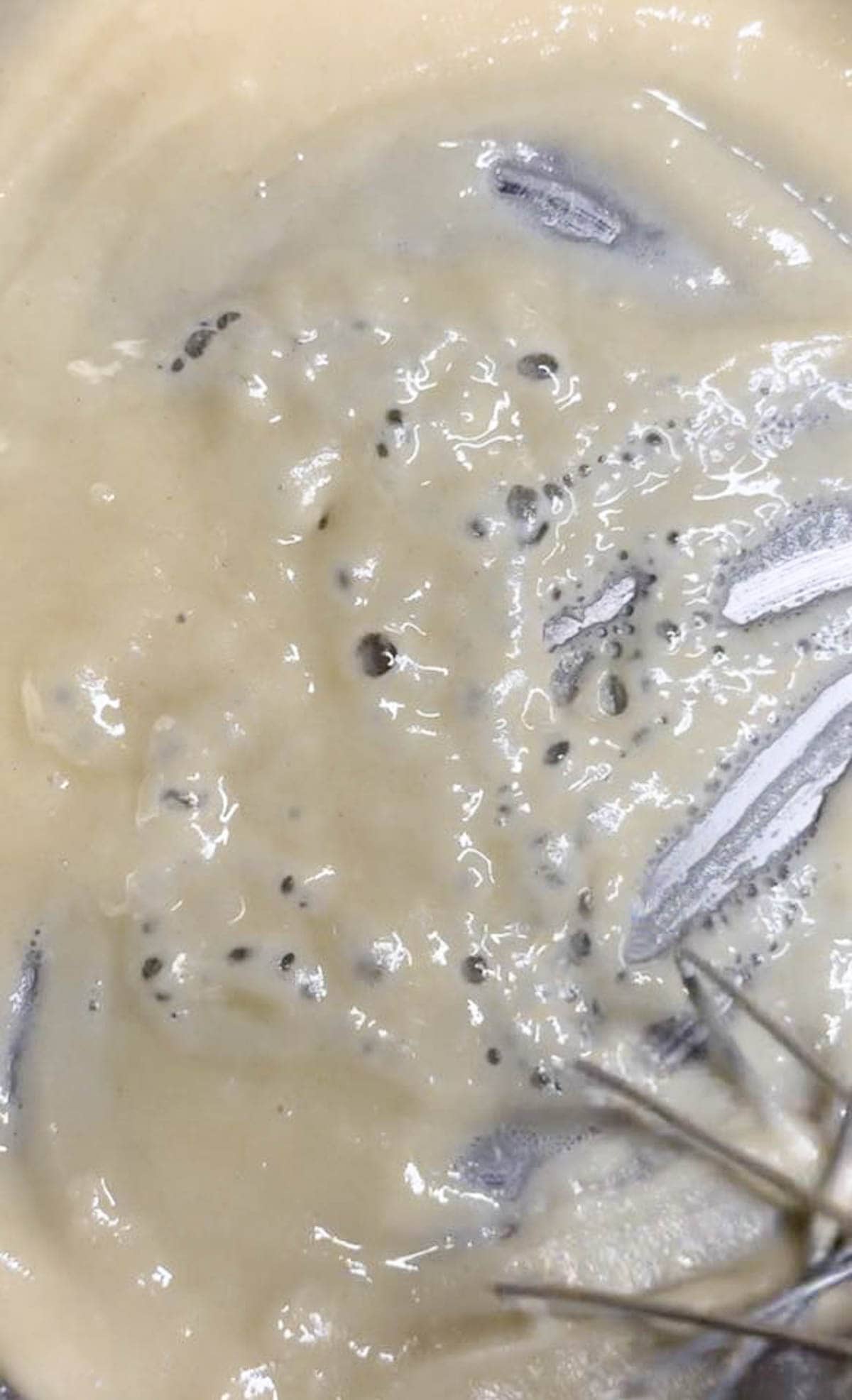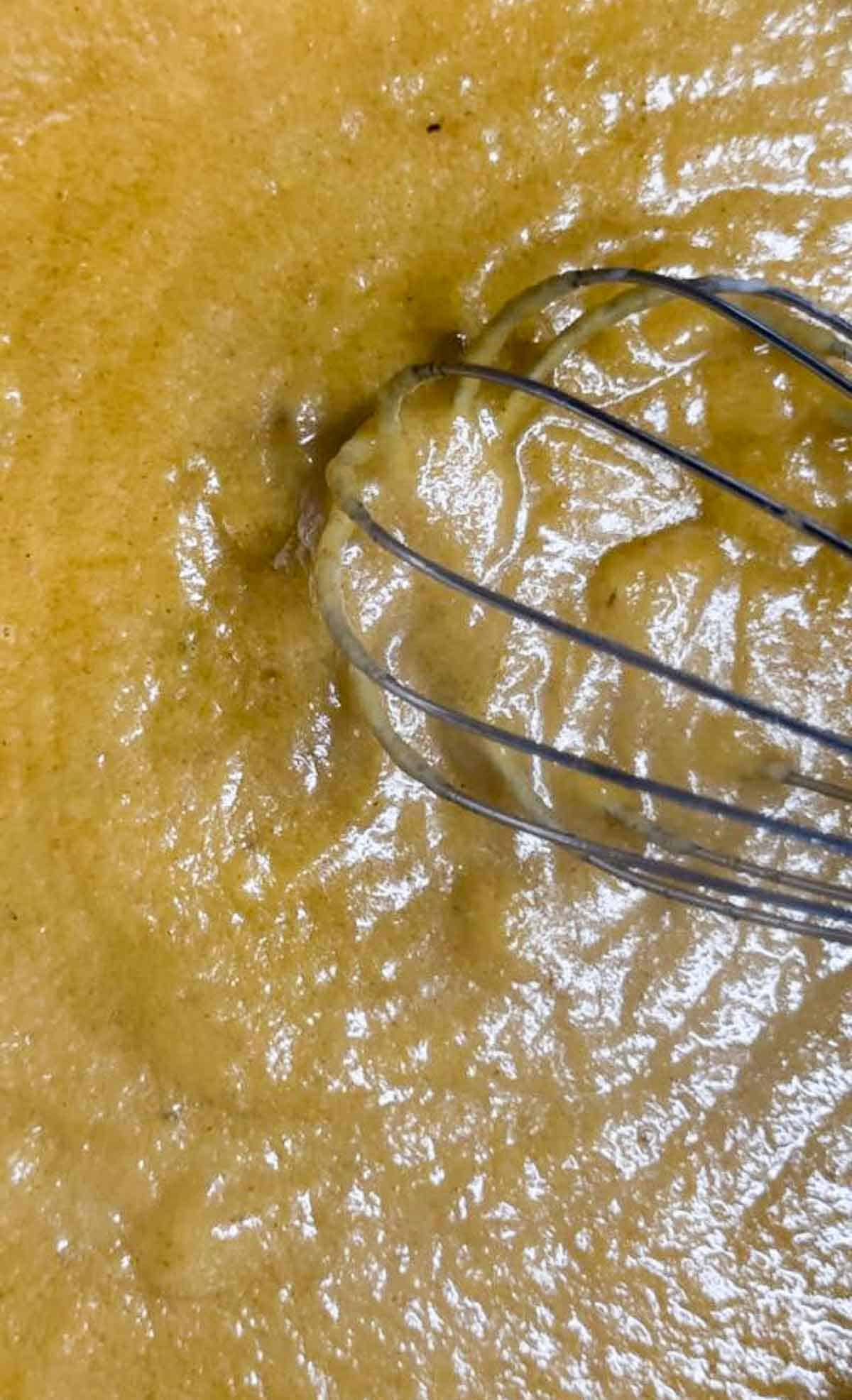How to Make Gravy from Drippings (for a Turkey)
It’s the yearly question we all ask staring at the cooling holiday turkey: how to make gravy from drippings? We have you covered with this guide to making best homemade turkey gravy ever with the pan drippings. No fancy ingredients needed!

Post may contain affiliate links. As a member of the Amazon affiliate program, I may earn a small commision from qualifying purchases. To read my affiliate policy, click here.
It is the inevitable question that seems to pop up about once – maybe twice if you make Turkey on, say, Christmas or Easter – how do you make gravy from the turkey drippings?
Yes. Even I have been there.
Truth is, I get the hubs to make the turkey gravy because I almost always forget just how he does it.
He also tends to handle making the turkey each year, so it makes sense that he tends to remember how without fail.
This guide will teach you everything you need to know about how to make gravy from turkey drippings.
Ingredients and Kitchen Supplies

To make gravy from turkey drippings, here are a few key ingredients:
- Turkey Drippings – You do not necessarily need to cook an entire turkey to get drippings. A breast will often give off some juices too. If you don’t feel like you have enough, you can supplement the drippings with either turkey or chicken broth. These can help add volume to the gravy without altering the flavor much. If you are using turkey drippings, skim off as much of the fat as possible.
- Flour – Gravy works best when keeping consistent ratios of flour, fat, and liquid. Flour acts as the thickener. You can also use gluten free flour or other starches to get a similar effect.
- Butter – To get the gravy started, we use about 1/4 cup of butter. If you have a lot of drippings, you may want to use more or supplement with fat that you can spoon off of the drippings before adding to the pot.
- Extra flavorings– These are optional but we often saute some crushed garlic cloves in the melted butter and season with a little extra salt and pepper.
Kitchen tools you want to have on hand include:
How to Make Gravy from Drippings
This guide is geared towards turkey gravy, but you could follow the same basic steps for other meats, like roast beef.
1. Melt the butter from drippings.

In a medium to large pot, melt the butter and add crushed garlic cloves if you are using them.
If not, no worries.
IIf you do not want to add extra garlic, you can move on to the next step after the butter melts.
2. Whisk in the flour.

Whisk an equal amount of flour into the melted butter.
To make gravy like a pro, trying sifting the flour into the fat using a fine mesh strainer.
This helps to eliminate lumps.
Keep whisking until the flour forms a pasty consistency with the butter.
There shouldn’t be any lumps at all.
3. Skim off the fat and pour the turkey drippings into the pot.

Before adding in the drippings, skim as much of the remaining fat off as you can.
This helps to maintain the right flour to fat ratio when making the gravy.
Carefully pour the skimmed pan drippings into a strainer held over the pot with the flour-butter mixture, whisking the drippings pretty vigorously as you pour them in.
It is helpful to have someone hold a mesh strainer over the pot. Pick your least favorite relative for this – let them burn their hand if you miss.
(KIDDING – SO SERIOUS! Or am I.)
Bring the drippings up to a simmer as you whisk consistently.
The gravy should start to thicken within a few seconds to minutes of simmering.
See option steps below if your gravy is too thick or too thin.
How Much Flour to Add to Turkey Gravy

For best results, when you are making gravy from drippings, you want to keep a roughly 1:1 ratio of flour to fat when you make the roux, which is the pasty mixture you get from the mixture of flour and butter.
Add too much and the gravy can become too thick and lumpy.
Add too little and the gravy won’t come together.
Of course, you may have to add more to fix thin gravy later on in the process.
Fixing Thin Gravy
Thin, watery gravy means there is not enough flour added in.
Whatever happens next: do not add more flour directly into the simmering gravy.
Instead, add 7 tablespoons of flour to 1/4 cup of cool turkey or chicken broth or water.
Whisk to combine and then pour the mixture into the simmering gravy.
Keep stirring.
If it thickens within a few seconds to minutes, it should be good.
If not, repeat the same process, adding in more of the flour mixture and checking after stirring it in.
Fixing Thick Gravy
Thick gravy does not pour well and may be a bit clumpy.
To fix, add in small amounts of either water or chicken/turkey broth.
We like to add about 1/2 a cup at a time, stirring it in completely and checking consistency before adding more.
Do not add too much at a time or it can become too thin, locking you into a desperate struggle of thinning and thickening your gravy and making your guests and relatives annoyed at just how long it is taking to make gravy.
How to Tell if Turkey Gravy is Ready
When it comes to turkey gravy – really most gravy – the consistency you want is coating the back of a spoon.
This is kind of the opposite of checking a cake in the oven.
When you pull a spoon out of gravy, you want the back of the spoon to get a coating.
The gravy will flow easily but not appear watery.
Serving and Storing
To store, pour cool gravy into an air tight container.
It should stay fresh in the fridge for about 4 to 5 days but it will thicken a lot in the fridge.
When you reheat the gravy, you’ll want thin it back to a gravy consistency by whisking in some chicken or turkey stock.
Freezing
You can freeze gravy if you like.
To freeze, place in a freezer safe container for up to 6 months.
When you are ready to enjoy it, let it thaw and then reheat it in the microwave or on the stovetop.
Tips and Tricks
- It really helps to skim as much of the fat off the drippings as possible. Greasy gravy is no good. Rich gravy, yes! Greasy? Pass!
- When in doubt, whisk! You really can’t whisk gravy too much. It’s not like overwhipping eggs or cream.
- You can use this exact method to make homemade gravy and substitute poultry stock or even beef stock if you are using this to make homemade beef gravy for roast beef.
What to Serve With Homemade Gravy

Gravy brings literally everything together. EVERYTHING.
I love to put it on top of my entire holiday plate.
It belongs on any of these sides and mains:
- Classic Homemade Stuffing
- Stuffed Chicken Breast with Stuffing
- Classic Roast Turkey in a Convection Oven
- Garlic Herb Ciabatta Stuffing (Vegetarian Stuffing Recipe)
- Apple Cider Turkey Breast
- Parmesan Garlic Twice Baked Potato Casserole
- Roasted Garlic Mashed Potatoes
- Mascarpone Mashed Potatoes with Rosemary Butter
- Apple Sage Stuffing (Stuffing with Apples)
- Garlic Butter Basted Turkey
- Maple Brown Butter Skillet Cornbread

Did you make this? Let me know!
Did you make homemade gravy from drippings or any other recipe on my site? Leave me a comment below and let me know how you liked it. And make sure you follow along with me on Facebook, Pinterest and Instagram to see everything we’ve got going on.

Ingredients
- 2 cups turkey drippings
- 4-6 cloves crushed garlic
- 1/4 cup butter
- 1/4 cup flour
- 1 teaspoon salt and pepper
Instructions
- Add the butter to a small sauce pan and melt over medium heat.
- Crush the garlic and stir into the melted butter.
- When the garlic becomes fragrant, add in the flour and whisk to combine.
- Keep whisking for about 1 to 2 minutes or until no lumps appear in the butter-flour mixture.
- Strain the drippings from the turkey pan carefully.
- Pour the drippings into the sauce pan, whisking to combine.
- Stirring frequently, allow the liquid to come up to a simmer.
- Once it starts to thicken and reaches your desired consistency, remove from heat and serve.










